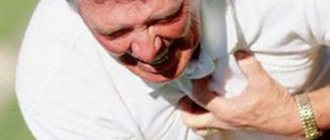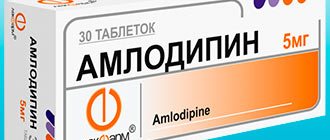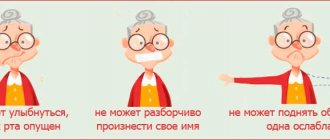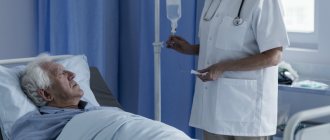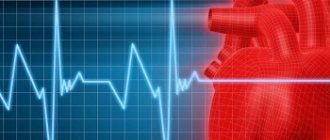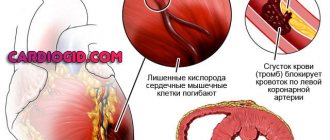Home — For the public
- Map of medical organizations
- Vaccination
- Clinical examination
- Fluorography
- Addresses and opening hours of clinics
- Emergency rooms
- Oncology
- Where to take an HIV test
- Healthy child's office
- Services
- Prevention of CVD
- Disease Prevention
- World Patient Safety Day
- Newspaper "Medical News"
- specialist
- School of Health
— Disease prevention
- HIV infection
- All about vaccination
- All about proper nutrition
- Hepatitis
- Flu
- Dementia
- Schoolchildren's health
- STD
- Tick-borne encephalitis
- Whooping cough
- Measles
- Legionellosis
- Meningococcal infection
- Oncology
- Acute intestinal infection
- Pediculosis
- First aid
- Pneumococcal infection
- Pneumonia
- Prevention of rabies
- Dependency Prevention
- Rotavirus infection
- Diabetes
- Cardiovascular diseases
- Injuries
- Tuberculosis
- Tularemia
- Physical activity
- Obstructive pulmonary disease
- Exotic infections
- Ecology
- Why is swimming in ponds dangerous?
— Cardiovascular diseases — First aid for stroke and heart attack
Timely and correctly provided first pre-hospital emergency care for the development of myocardial infarction and stroke is the factor that in many cases determines the outcome of these conditions that are dangerous to the health and life of the patient. Often, the lack of such correct assistance, which should be provided immediately after the development of these dangerous vascular accidents is suspected, becomes the cause of disability or death of people.
Doctors strongly recommend that all people at risk of developing these dangerous conditions know the first signs of stroke and myocardial infarction and be able to provide first aid. Almost every person should have such a reminder, because it can save someone’s life. Heart attack and stroke usually occur suddenly and at this moment it is necessary not to get confused! These simple steps can help save the patient and prevent the development of many complications or death.
The first signs of myocardial infarction: when to take action?
Myocardial infarction is an acute condition that occurs due to coronary heart disease and is accompanied by severe circulatory failure in the coronary vessels and necrosis of part of the heart muscle tissue. In 10–12% of cases it is life-threatening for the patient. More often, heart attacks occur in men over 60 years of age, but after menopause, women are also at risk. In recent years, there has been a significant “rejuvenation” of this condition and the development of anesthesia of the heart muscle in 20-30 year old young people is observed more and more often.
In 90% of patients with coronary artery disease, a heart attack is provoked by coronary artery thrombosis caused by atherosclerosis. The following reasons can also provoke coronary circulatory insufficiency:
- thrombosis and spasm of coronary vessels;
- heart injuries;
- tumors or metastases.
- The risk group for developing a heart attack includes people with the following pathologies and conditions:
- atherosclerosis;
- hypertonic disease;
- obesity;
- diabetes;
- increased levels of LDL in the blood;
- adynamia;
- bleeding disorders;
- smoking and alcoholism;
- excessive psycho-emotional and physical stress.
Usually the attack begins suddenly, but in some patients there may be a pre-infarction condition, manifested by an increase in temperature, tachycardia and arrhythmia, cyanosis of the mucous membranes, severe pallor, an increase in blood pressure with its subsequent decrease. This condition can last from several hours to several days or weeks.
The main sign of a heart attack is severe pain in the chest, which is prolonged. It differs from the pain that occurs with angina pectoris in that it manifests itself for more than 15 minutes and is not eliminated even by repeated administration of Nitroglycerin. Usually pain occurs after physical or psycho-emotional stress.
Immediate first aid actions for a heart attack should be performed immediately after the following symptoms occur:
- severe and prolonged pain behind the sternum of a burning, stabbing, tearing, squeezing nature (it is present for half an hour and is not eliminated or is only partially relieved by the usual intake of Nitroglycerin);
- severe anxiety and fear of death;
- pain radiates to the left (sometimes to the right) arm, shoulder blade, interscapular area, neck, teeth;
- cold clammy sweat;
- dizziness or fainting;
- pallor;
- nausea;
- difficulty breathing and shortness of breath (sometimes);
- rapid and arrhythmic pulse.
In approximately 20% of cases, myocardial infarction occurs in an atypical form and is not accompanied by pain in the heart area. In such cases, symptoms may be as follows:
- with an atypical location of pain - it is concentrated in the left hand, at the tip of the little finger of the left hand, in the cervicothoracic spine or in the scapula, in the area of the lower jaw or neck, the pain syndrome is complemented by typical manifestations of a heart attack;
- with the gastric type of attack - indigestion and abdominal pain;
- with asthmatic – shortness of breath and suffocation, dry cough;
- with arrhythmic – rapid and arrhythmic pulse;
- with cerebral – confusion, dizziness, nausea and vomiting, speech disorders;
- with edema – severe weakness, shortness of breath, rapid increase in edema;
- if painless - discomfort in the chest, weakness, increased sweating.
The first signs of a heart attack and any suspicion of its development are a reason to call an ambulance. The operator must be informed about the symptoms and the possibility of a heart attack. After this, you should immediately begin providing pre-hospital emergency care.
Diagnostics
After the ambulance arrives, the patient, as a rule, undergoes an urgent electrocardiogram, according to the readings of which the development of a heart attack can be determined. At the same time, doctors collect anamnesis, analyzing the time of onset of the attack, its duration, pain intensity, its localization, irradiation, etc.
The following changes can be considered electrocardiographic criteria for the development of an attack:
- damage or arched growth of the st segment, which can merge with a positive t wave or even turn into a negative t wave;
- the appearance of a pathologically altered q wave with a decrease in the amplitude of the r wave. sometimes there may be a complete disappearance of the r wave with the formation of qs;
- the appearance of a negative, often symmetrically located T wave.
In addition, acutely occurring bundle branch block may be indirect signs of the development of a heart attack. Also, the diagnosis of myocardial infarction is based on the detection of markers of damage to the muscle tissue of the heart.
Today, the most convincing (obvious) marker of this type can be considered the troponin level in the blood, which will be significantly increased when the described pathology occurs.
Troponin levels may rise sharply in the first five hours after a heart attack and may remain elevated for up to twelve days. In addition, to detect the pathology in question, doctors can prescribe echocardiography.
How to help with myocardial infarction: first aid
The algorithm for providing emergency care for myocardial infarction is as follows:
- Place the patient on his back or give him a comfortable semi-sitting position. Place a cushion under your neck.
- Calm the patient, eliminate physical activity and ensure the most comfortable temperature conditions and fresh air flow. You should speak to the person in a calm and even tone, without showing signs of panic or making sudden movements.
- Measure blood pressure if it is less than 130 mm Hg. Art., then it is better to refuse taking Nitroglycerin. Count your pulse for 1 minute.
- Give the patient a sedative: Corvalol, Valocordin, Motherwort tincture, etc.
- Give the patient a tablet of Nitroglycerin or another nitrate-containing drug (Isoket, etc.) under the tongue, and after five minutes repeat taking this drug if the blood pressure is at least 130 mm Hg. Art. Before the ambulance arrives, you can give 2-3 tablets. If after the dose the patient experiences severe throbbing pain in the head, the dose should be reduced to 1/2 tablet.
- If there are no contraindications, grind 150-300 mg of Acetylsalicylic acid and give it to take with a small amount of water.
- If the pulse does not exceed 70 beats per minute, then give a single dose of one of the adrenergic blockers (for example, 50 mg of Atenolol, Metoprolol).
- Mustard plaster can be applied to the area where pain is localized. Be careful not to burn your skin!
- After the arrival of doctors, you should inform them of your blood pressure and pulse, list the symptoms observed in the patient and the medications he has taken.
Rehabilitation
a cardiologist twice a month . During the second year after the attack, it is necessary to visit a general practitioner once every four months. If necessary, each of these specialists can refer the patient to a rehabilitation center or sanatorium.
For successful rehabilitation, it is important for the patient to strictly follow all the doctors’ recommendations:
- take necessary medications. These may be statins, anticoagulants, antihypertensive drugs;
- maintain a balance between sleep, work and rest;
- walk in the fresh air more often;
- avoid stress. After a heart attack, a person should receive only positive emotions.
The first signs of a stroke: when to take action?
A stroke is a condition caused by a significant disruption of cerebral circulation, leading to severe spasm of an artery or its rupture. This vascular catastrophe is provoked by significant blockage of blood clots or spasm of an arterial vessel. More often it develops in men after 45–50 years. Stroke is more common in people over 50 years of age and is just as likely to occur in women after menopause as in men.
People at risk for developing stroke include people with the following pathologies and conditions:
- atherosclerosis;
- hypertonic disease;
- increased levels of total and “bad” cholesterol and triglycerides;
- diabetes;
- obesity;
- hypothyroidism;
- bleeding disorders;
- adynamia;
- unhealthy diet (predominance of fast food, fried, fatty foods, flour, baked goods and carbonated drinks in the diet);
- frequent stress, lack of sleep and overwork;
- congenital and acquired vascular pathologies;
- smoking and alcoholism;
- taking hormonal contraceptives and drugs that increase cholesterol levels;
- hormonal disorders;
- age after 45 – 50 years;
- menopause period.
Severe impairment of cerebral circulation leads to vasospasm, insufficient blood supply to a certain area of the brain and the onset of ischemic stroke. In other cases, a blocked blood vessel ruptures and blood flows into the brain tissue, a condition called hemorrhagic stroke. The manifestations of these vascular accidents largely depend on the location of the affected brain tissue.
The first signs of a stroke are usually the following:
- severe weakness, lethargy, drowsiness;
- dizziness (up to fainting or coma);
- speech disorders;
- spatial disorientation;
- unsteadiness of gait;
- impaired coordination of movements and balance;
- displacement of the eyeballs to the side;
- numbness followed by paralysis of an arm and/or leg on one side or another of the body.
It is very important to recognize the onset of a stroke in time. Its symptoms appear suddenly. It is important not to get confused and not lose time to provide necessary and vital first aid.
Experts recommend not to forget such a stroke detection rule as FAST (or FAST):
- F (face – face). With a stroke, facial asymmetry is observed due to paralysis of the facial muscles. If you ask a patient to smile, the smile will be uneven.
- A (arm – hand). If you ask a person with a stroke to raise both arms, it will be noticeable that the limb on one side is significantly limited in movement due to numbness and paralysis.
- S (speech - speech). The patient should be asked to say the phrase: “I am healthy now.” With a stroke, speech will be slurred and slurred due to impaired articulation.
- T (time - time). All of the above-described disorders occur suddenly and sharply during a stroke. Their appearance is a signal to urgently call an ambulance!
Any suspicion of the development of a stroke indicates the need for medical assistance, and it should be provided in a specialized hospital. It should be remembered that after 3 hours the violations will become irreversible and can lead to severe disability or death.
Typical course
To be able to avoid the most severe complications of a heart attack, it is advisable to know and remember the classic symptoms of the development of this pathology.
These symptoms usually include:
- sudden development of acute chest pain, with a burning, often pressing or squeezing character;
- irradiation of pain to the pericardial region (irradiation to the left side of the chest, left arm or under the left shoulder blade);
- situations when the described pain is accompanied by a panic attack, acute fear of death.
It is important to remember that the slightest suspicion of the development of myocardial infarction should force the patient to urgently consult a doctor to receive specialized treatment aimed at opening a narrowed, closed (stenotic) vessel to prevent the development of extensive necrosis of the heart muscles.
Although a heart attack is always an unexpected heart attack, it is not difficult to recognize. Its symptoms cannot be confused with any other disease. Do not forget that a heart attack is life-threatening. Timely help can save a person, but its absence will lead to death. An ambulance must be called as quickly as possible.


